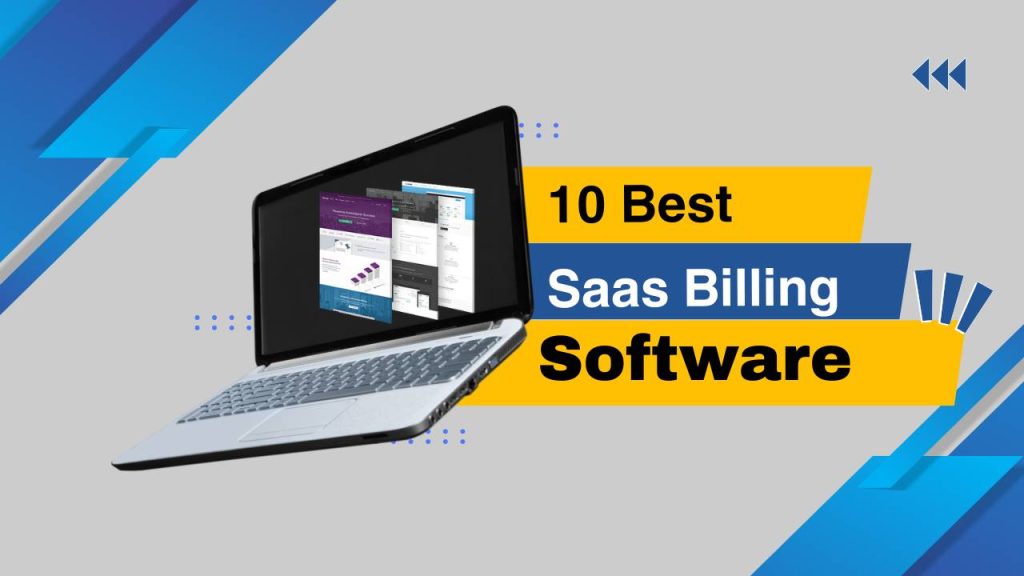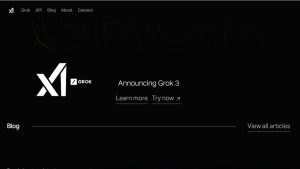In today’s competitive SaaS landscape, selecting the right SaaS billing software is more than just about managing invoices—it’s about streamlining the entire subscription lifecycle. From automating billing and tax compliance to reducing churn and improving analytics, the right billing solution can drive sustainable growth for any startup.
As a SaaS expert and startup advisor, I’ve compiled this in-depth review of the top 10 SaaS billing software platforms that offer the best value, features, and scalability for subscription startups in 2025.
What Is SaaS Billing Software?
SaaS billing software is a specialized tool designed to automate and streamline the process of billing customers on a recurring or subscription-based model. It plays a critical role for SaaS startups and subscription businesses by reducing manual work, minimizing billing errors, improving customer experience, and maintaining compliance with financial regulations. These platforms manage various aspects of billing operations, helping businesses scale efficiently and predict revenue growth.
1. Subscription Plan Management
SaaS billing software allows companies to create, modify, and manage multiple subscription plans tailored to different customer segments. These plans can include free trials, tiered pricing, usage-based billing, discounts, and add-ons. Advanced platforms offer flexibility in changing plans mid-cycle (upgrade/downgrade) and proration support, which ensures accurate billing when changes are made to an active subscription.
2. Invoicing and Payments
These tools automate the generation and delivery of invoices to customers on time, reducing manual intervention and the risk of human error. SaaS billing software supports various billing frequencies and formats, including one-time invoices, recurring invoices, metered billing, and consolidated billing.
In addition, these platforms integrate with multiple payment gateways (like Stripe, PayPal, Razorpay, and Square) to facilitate secure payment collection via credit cards, ACH, bank transfers, and even digital wallets.
Features such as auto-reminders, retry logic for failed payments, and dunning management help reduce churn and improve cash flow.
3. Revenue Recognition
Revenue recognition ensures that income is recorded according to accounting standards like ASC 606 or IFRS 15. SaaS billing software automates this complex process by breaking down payments over time and recognizing revenue accurately based on service delivery.
This is especially critical for subscription businesses where payments are made upfront for services rendered over a longer period. The software provides audit-ready logs, deferred revenue reports, and ensures compliance with finance regulations—helping avoid accounting discrepancies and making it easier during financial audits.
4. Taxation and Compliance
SaaS billing software handles tax computation across multiple geographies, currencies, and tax laws. It automates the calculation of applicable sales tax, VAT, GST, and other location-specific taxes based on the customer’s location, product type, and tax exemption status.
The software stays updated with tax rule changes across regions, ensuring compliance with international standards like EU VAT MOSS, U.S. sales tax nexus, and Indian GST. This helps prevent legal issues and simplifies tax filing with automated reporting and documentation.
5. Reporting and Analytics
A robust SaaS billing solution offers detailed insights into financial performance through dashboards and reports. Businesses can track Monthly Recurring Revenue (MRR), Customer Lifetime Value (CLV), Churn Rate, ARPU (Average Revenue Per User), and Cash Flow Forecasts.
Advanced analytics features include cohort analysis, customer segmentation, revenue forecasting, and churn prediction, helping startups make data-driven decisions. Some tools also allow real-time monitoring of metrics, customizable reports, and integration with BI tools like Tableau or Power BI.
6. Customer Self-Service Portals
Self-service portals empower customers to manage their subscriptions, update billing details, view invoice history, and download payment receipts—without needing support intervention. This improves customer satisfaction and reduces support ticket volume.
Customers can also easily upgrade or downgrade their plans, change payment methods, and receive real-time notifications about upcoming charges, failed payments, or expiring cards. A user-friendly portal significantly enhances transparency and trust, encouraging customer retention.
7. Seamless Integration with Business Tools
Most SaaS billing platforms integrate seamlessly with other essential tools such as payment gateways, CRMs (like HubSpot or Salesforce), accounting software (like QuickBooks or Xero), and analytics tools (like Google Analytics).
This integration helps create a centralized system where data flows smoothly across departments. For example, customer payment status from the billing tool can update automatically in the CRM, helping sales and support teams deliver personalized experiences based on payment behavior and account status.
Key Features to Look for in SaaS Billing Software
Choosing the right SaaS billing platform is crucial to ensuring the long-term efficiency and scalability of your subscription business. A startup in the early stages or a rapidly growing enterprise, your billing software must support your business model while being adaptable to future needs. Below are the essential features to prioritize:
1. Recurring Billing Automation
A strong SaaS billing solution should automate the entire lifecycle of recurring billing—covering free trials, renewals, prorated upgrades/downgrades, and cancellations. This eliminates manual intervention and ensures accuracy across billing cycles.
Advanced systems handle subscription proration when users change plans mid-cycle and automatically apply appropriate charges. They also support usage-based billing, hybrid pricing, and time-based subscriptions. Automation ensures customers are billed correctly and on time, reducing billing errors and improving user satisfaction.
2. Tax Compliance
Proper tax management is non-negotiable, especially for companies operating in multiple regions. Look for billing software that supports automated tax calculation for VAT (Europe), GST (India and other countries), and U.S. sales tax based on local jurisdiction rules.
The software should dynamically calculate the right tax rate based on customer location, product type, and exemptions, and generate tax-compliant invoices. Integration with tax services like Avalara or TaxJar is a plus. This minimizes legal risks and simplifies cross-border taxation and filings.
3. Dunning Management
Dunning refers to the process of recovering failed payments—often a major cause of involuntary churn. A good SaaS billing tool should offer intelligent dunning management features like automated payment retries, personalized email reminders, and in-app notifications.
Some platforms even allow customizable dunning workflows with multiple retry attempts spaced out strategically to maximize recovery. Support for grace periods and automatic service suspension/reactivation is also vital to maintaining account control and improving collection rates.
4. Analytics & Metrics
A key strength of any SaaS billing system is its ability to provide real-time visibility into business performance. Look for platforms that offer dashboards with core SaaS metrics like Monthly Recurring Revenue (MRR), Annual Recurring Revenue (ARR), Customer Lifetime Value (CLTV), Churn Rate, ARPU, and Net Revenue Retention.
Top platforms go further by offering cohort analysis, customer segmentation, and revenue forecasting tools that empower decision-makers with actionable insights. These analytics help founders, finance teams, and investors understand the health of the business and make data-backed growth decisions.
5. Revenue Recognition
SaaS companies need to recognize revenue accurately over the duration of the service, especially for compliance with accounting standards such as ASC 606 and IFRS 15. A billing platform with built-in revenue recognition ensures that income is logged when services are delivered, not when the payment is received.
This feature automates deferred revenue management, provides audit-ready logs, and supports contract-based or performance-based revenue schedules, which is vital for investor reporting, due diligence, and financial audits.
6. Integrations
Your billing software should seamlessly integrate with the tools your team already uses. These include payment gateways (e.g., Stripe, Razorpay), accounting software (e.g., QuickBooks, Xero), CRMs (e.g., Salesforce, HubSpot), and ERP systems (e.g., NetSuite).
Strong integration reduces data silos, improves workflow automation, and ensures real-time synchronization of customer data across billing, finance, and support systems. This is essential for building a scalable tech stack and avoiding duplicate data entry or manual errors.
7. Multi-Currency & Multi-Language Support
If your company is expanding globally—or plans to—you need a billing platform that supports multi-currency pricing and multi-language invoicing and communications. This allows customers to view and pay invoices in their preferred currency and language, improving trust and user experience.
The software should also support currency conversion, exchange rate updates, and localized tax rules to facilitate international billing without complications. Multilingual support is especially important for customer portals, invoices, and automated notifications.
10 Best SaaS Billing Software for Subscription
1. Chargebee – Best Overall for Growing SaaS Startups
Chargebee has become synonymous with subscription billing for high-growth SaaS startups. With support for complex billing scenarios and seamless integration with sales, CRM, and accounting platforms, it’s a top-tier solution.
Key Features & Benefits:
- Supports every pricing model: from flat rate to volume-based, usage-based, and hybrid.
- Advanced plan management: schedule plan changes, grandfather customers, apply trial periods, and handle mid-cycle proration.
- Invoicing automation: generate GST/VAT-compliant invoices instantly, with localized templates and multilingual options.
- Revenue reporting: instant access to real-time MRR, ARR, LTV, churn, and cohort reports that are critical for investor updates and internal planning.
- Multiple payment gateway support: works with over 30 gateways globally and handles smart payment routing for better success rates.
Ideal For:
SaaS companies preparing for aggressive growth, multi-country expansion, or entering enterprise markets. Chargebee is also SOC 2 Type 2 certified, making it suitable for privacy-sensitive industries.
2. Recurly – Optimized for Revenue Recovery and Churn Prevention
Recurly is a strong SaaS billing software built for recurring revenue models. It emphasizes intelligent automation, personalized retry logic, and subscription customization to reduce churn and maximize revenue.
Key Features & Benefits:
- Revenue optimization engine: uses machine learning to determine the best retry times for failed payments based on past customer behavior and bank response codes.
- Plan experiments: A/B test different pricing models and product bundles to find the most effective monetization strategy.
- Support for virtual terminals: allows manual entry of billing details for B2B or over-the-phone transactions.
- Global readiness: supports over 140 currencies and payment methods including ACH, SEPA, Apple Pay, and Google Pay.
- Analytics dashboard: includes detailed insights on active subscriptions, MRR movement, churn segments, and billing events.
Ideal For:
Startups struggling with involuntary churn, SaaS models with fast-moving customer bases, or those that want deeper testing on plan pricing and subscriber behavior.
3. Paddle – The All-in-One Billing, Tax & Compliance Platform
Paddle is unique in that it acts as a Merchant of Record, taking full responsibility for the financial side of customer relationships—handling taxes, compliance, fraud, and payments.
Key Features & Benefits:
- Tax-as-a-service: Paddle registers, files, and remits global sales taxes (VAT, GST, etc.) on your behalf, reducing legal liabilities.
- Fully localized checkout experience: supports multiple languages, currencies, and country-specific payment preferences to improve conversions globally.
- Revenue share model: no fixed fees—startups pay a small commission per transaction, aligning with early-stage budgets.
- Instant refunds and dispute resolution: Paddle handles customer refunds and chargeback cases end-to-end.
Ideal For:
Startups that want to go international without hiring tax attorneys, building legal entities in every region, or managing regulatory paperwork. Paddle’s MoR model is ideal for SaaS companies selling in the EU, UK, Asia, and North America simultaneously.
4. Zoho Subscriptions – Affordable & Feature-Rich for Small Teams
Zoho Subscriptions is part of Zoho’s extensive suite of business software. It’s particularly beneficial for startups on a budget who still need enterprise-level functionality.
Key Features & Benefits:
- Automated dunning: allows for custom email reminders, retry logic, and even pause/resume billing on failed payments.
- Multi-language and multi-currency support: serves international clients with translated invoices and appropriate tax rules.
- Webhooks and APIs: enable developers to automate custom workflows, such as notifying CRMs or ticketing systems on payment events.
- Integration with Zoho Finance tools: works seamlessly with Zoho Books, Zoho Inventory, and Zoho CRM.
Ideal For:
Founders running lean teams who want a comprehensive, low-cost solution that requires minimal coding but offers maximum automation.
5. Stripe Billing – Highly Customizable and Developer-Centric
Stripe Billing is ideal for startups with technical resources that want granular control over the billing flow. Backed by Stripe’s payment infrastructure, it offers global reach and modular APIs.
Key Features & Benefits:
- Modular architecture: create custom logic for signups, upgrades, downgrades, invoicing, and refunds.
- Built-in tax automation: Stripe Tax calculates and collects taxes in over 30 countries and more than 10,000 jurisdictions.
- Invoice-level customization: build branded invoices with embedded payment links and smart retry options.
- Real-time reporting tools: integrate with Stripe Radar (fraud detection), Atlas (company formation), and Identity (KYC).
Ideal For:
SaaS startups with in-house dev teams that want deep billing customization, real-time fraud detection, and international tax support with one infrastructure.
6. ProfitWell Retain – Focused on Saving Failed Payments
ProfitWell Retain helps plug a silent revenue leak: involuntary churn from failed payments. It recovers 30–40% more failed payments than default retry systems by blending human psychology, smart algorithms, and optimized communication.
Key Features & Benefits:
- Behaviorally-driven dunning: adapts retry logic based on time zones, previous responses, and customer value.
- Pre-dunning alerts: notify customers before a card expires, increasing proactive updates.
- Live payment recovery team: includes human recovery specialists who act as part of your team and personally follow up with high-value accounts.
- Post-churn analytics: understand why users churned and how to win them back.
Ideal For:
Startups using Stripe, Recurly, or Chargebee looking to enhance their recovery rate and reduce passive churn without building a dedicated internal dunning team.
7. SaaSOptics (Maxio) – Advanced Accounting & Revenue Recognition
SaaSOptics, now integrated into Maxio, is purpose-built for SaaS startups dealing with long-term contracts, deferred revenue, and multi-entity operations. It’s ideal for startups transitioning into scale-ups and needing GAAP-compliant reporting.
Key Features & Benefits:
- Full revenue lifecycle tracking: from quote to billing, recognition, and renewal.
- Deferred revenue schedules: fully automated journal entries, aging schedules, and ASC 606 compliance.
- In-depth dashboards: track sales pipeline-to-cash flow, segmented churn, contract renewals, and upsells.
- Audit-ready exports: generate clear, verifiable reports to pass due diligence or annual audits.
Ideal For:
Startups managing B2B SaaS contracts, raising VC capital, or preparing for compliance-heavy operations.
8. Chargify (Now Maxio) – For Unique & Usage-Based Billing
Chargify, also now a part of Maxio, is ideal for SaaS products that don’t fit the standard subscription box. Its modular design supports event-based, tiered, and volume-based pricing strategies.
Key Features & Benefits:
- Component-based pricing: charge customers based on modules, usage limits, or API call volume.
- Billing triggers: automate charges based on custom events like user logins, transactions, or activity thresholds.
- Customer insights: provides a live view of individual user behavior and subscription usage trends.
- Built-in analytics: segment revenue by plan, product line, or acquisition channel.
Ideal For:
APIs, data-as-a-service platforms, or SaaS companies offering modular feature bundles that need flexibility in pricing and billing logic.
9. Billwerk+ – Enterprise-Grade SaaS Billing for European Startups
Billwerk+ is designed for the European SaaS ecosystem, offering full support for SEPA direct debit, GoBD compliance, and GDPR from the start. It handles all legal and fiscal complexities within the EU.
Key Features & Benefits:
- Country-specific tax rules: supports VAT MOSS, reverse-charge logic, and German invoice requirements.
- Digital archiving: ensures all billing documentation meets German GoBD audit standards.
- Integrated with European CRMs and ERPs: supports DATEV, SAP, and Microsoft Dynamics.
- Built-in invoice validation: for both customers and tax authorities.
Ideal For:
Startups operating in Germany, France, Austria, or Scandinavia looking for full legal compliance, multi-language support, and domestic payment options.
10. Invoiced – Powerful AR Automation and Subscription Management
Invoiced is a rising star for startups that want to automate invoicing, collections, and customer communications. It’s a full-suite platform that blends billing with AR intelligence.
Key Features & Benefits:
- Full subscription lifecycle control: from plan setup to recurring billing, renewals, and cancellation management.
- Smart collections automation: automatically escalate unpaid invoices through email, SMS, or even external agencies.
- Cash forecasting: uses invoice aging and historical data to predict future revenue.
- Customer portal: lets clients manage payments, billing history, and communication preferences.
Ideal For:
Service-oriented SaaS startups or agencies with recurring billing needs and large client bases, particularly those without internal finance teams.
Benefits of Using Modern SaaS Billing Software
A modern SaaS billing platform does more than just send invoices—it transforms your entire revenue process. Here’s how:
1. Reduces Manual Effort
Automates tasks like invoicing, payment processing, and reconciliation, saving time and reducing errors. Finance teams can focus on strategy instead of daily billing tasks.
2. Improves Cash Flow
Automated collections, smart payment retries, and dunning workflows help recover failed payments and ensure consistent revenue, reducing involuntary churn.
3. Enhances Customer Satisfaction
Transparent billing, timely notifications, and self-service portals give customers control over their subscriptions, improving trust and reducing support requests.
4. Enables Data-Driven Decisions
Real-time dashboards provide insights into key metrics like MRR, ARR, churn, and LTV—empowering smarter pricing, marketing, and growth strategies.
5. Ensures Compliance
Automatically applies global tax rules, supports ASC 606/IFRS 15, and complies with data privacy laws like GDPR—reducing legal risks and maintaining accuracy.
FAQs
1. What is SaaS billing software, and why is it important for startups?
SaaS billing software automates the process of managing subscriptions, generating invoices, handling payments, calculating taxes, and reporting revenue. It’s critical for startups because it reduces manual work, minimizes errors, improves cash flow, ensures tax compliance, and supports scalable growth.
2. Which SaaS billing software is best for startups with limited technical teams?
For startups with non-technical teams or limited developer resources, Zoho Subscriptions and Invoiced are great choices. They offer intuitive interfaces, no-code automation, and easy onboarding without compromising on essential features like automated invoicing, tax handling, and dunning.
3. Which billing software supports global tax compliance like VAT and GST?
Paddle and Billwerk+ stand out when it comes to global tax compliance. Paddle handles all tax registration, filing, and remittance as your Merchant of Record (MoR), while Billwerk+ supports VAT MOSS, SEPA, and full GDPR compliance for EU-based startups.
4. What’s the difference between Chargebee and Stripe Billing?
Chargebee offers a broader suite of out-of-the-box subscription management tools, financial reporting, and integrations suitable for scaling startups. Stripe Billing, while powerful, is better suited for developers who want full API control and a highly customizable billing experience tied directly to Stripe’s payment ecosystem.
5. Can SaaS billing software help reduce customer churn?
Yes. Platforms like Recurly and ProfitWell Retain include smart dunning features that automatically retry failed payments and notify users before card expiration. ProfitWell Retain, in particular, specializes in recovering revenue lost due to involuntary churn through behavioral data and advanced retry logic.
6. What billing software is best for startups with usage-based pricing models?
Chargify (now part of Maxio) is designed specifically for startups with complex or usage-based pricing models. It supports metered billing, per-seat pricing, tiered plans, and event-based billing—making it ideal for SaaS platforms offering modular services or APIs.
7. How do I choose the right SaaS billing software for my stage of growth?
Early-stage startups may prioritize affordability and ease of use (e.g., Zoho Subscriptions, Invoiced), while scaling startups (Series A+) should consider tools with robust analytics, revenue recognition, and compliance (e.g., Chargebee, Maxio, Recurly). Consider business model fit, compliance needs, and technical resources before choosing.
8. Do these billing platforms integrate with popular tools like QuickBooks, Xero, Salesforce, or HubSpot?
Yes. Most top SaaS billing software platforms offer native or third-party integrations with CRMs, accounting tools, and ERPs. For example, Chargebee and SaaSOptics integrate with QuickBooks, Xero, Salesforce, and NetSuite, while Zoho Subscriptions integrates natively with the entire Zoho ecosystem.
9. Are there free or low-cost SaaS billing software options available for bootstrapped startups?
Yes. Tools like Zoho Subscriptions, Stripe Billing (pay-as-you-go), and ProfitWell Retain (free with success-based pricing) offer cost-effective or free plans. These are perfect for startups that are just starting out and want to control costs while gaining access to essential billing features.
10. What are the most critical billing KPIs I should track using these platforms?
The most important KPIs include:
- Monthly Recurring Revenue (MRR)
- Annual Recurring Revenue (ARR)
- Churn Rate
- Customer Lifetime Value (LTV)
- Revenue Recovery Rate
- Customer Acquisition Cost (CAC)
- Net Revenue Retention (NRR)
Platforms like Chargebee, Recurly, and ProfitWell provide real-time dashboards to track these metrics in detail.





